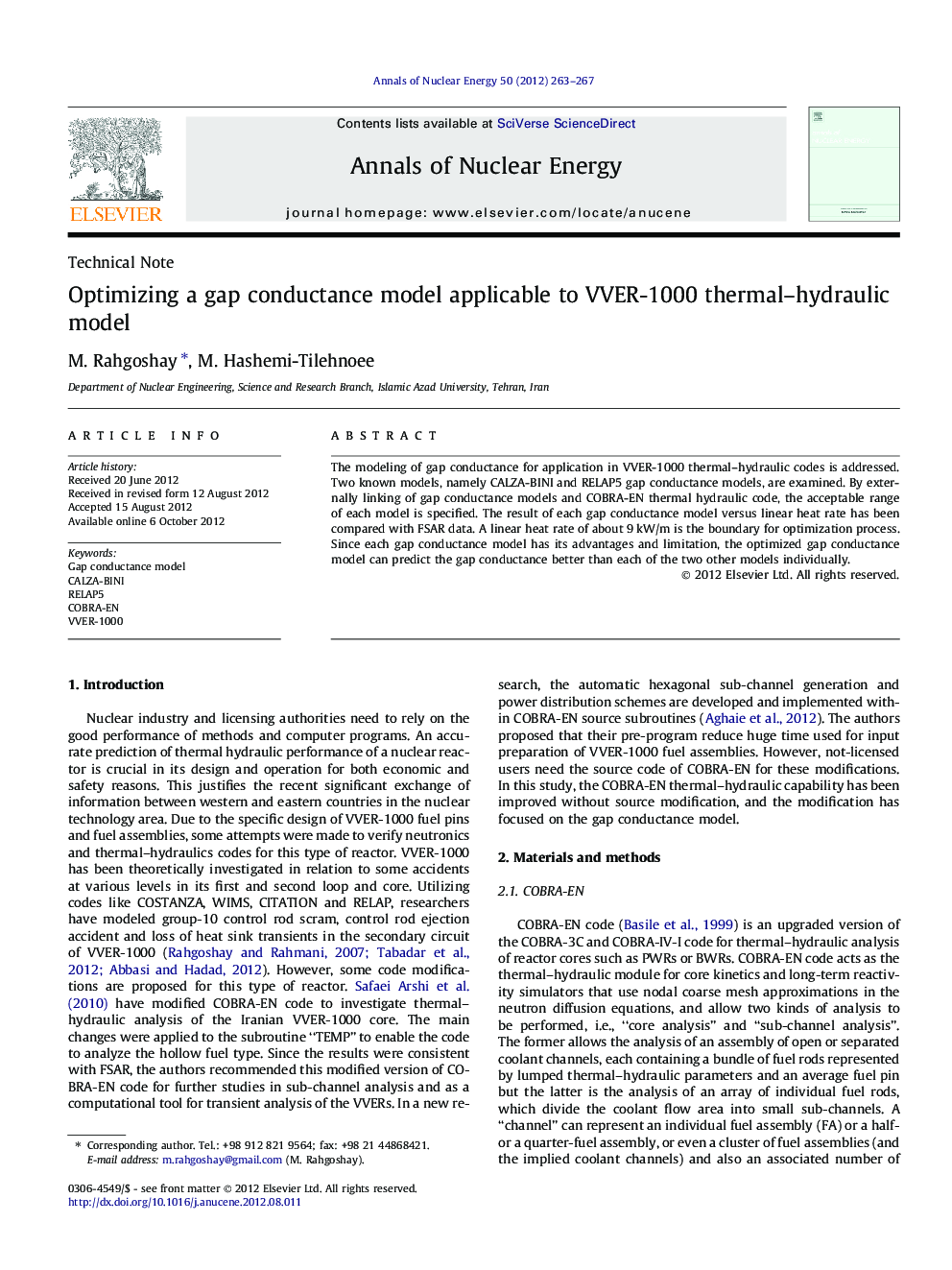| Article ID | Journal | Published Year | Pages | File Type |
|---|---|---|---|---|
| 1728833 | Annals of Nuclear Energy | 2012 | 5 Pages |
The modeling of gap conductance for application in VVER-1000 thermal–hydraulic codes is addressed. Two known models, namely CALZA-BINI and RELAP5 gap conductance models, are examined. By externally linking of gap conductance models and COBRA-EN thermal hydraulic code, the acceptable range of each model is specified. The result of each gap conductance model versus linear heat rate has been compared with FSAR data. A linear heat rate of about 9 kW/m is the boundary for optimization process. Since each gap conductance model has its advantages and limitation, the optimized gap conductance model can predict the gap conductance better than each of the two other models individually.
► Two known conductance models for application in VVER-1000 thermal–hydraulic code are examined. ► An optimized gap conductance model is developed which can predict the gap conductance in good agreement with FSAR data. ► The licensed thermal–hydraulic code is coupled with the gap conductance model predictor externally.
